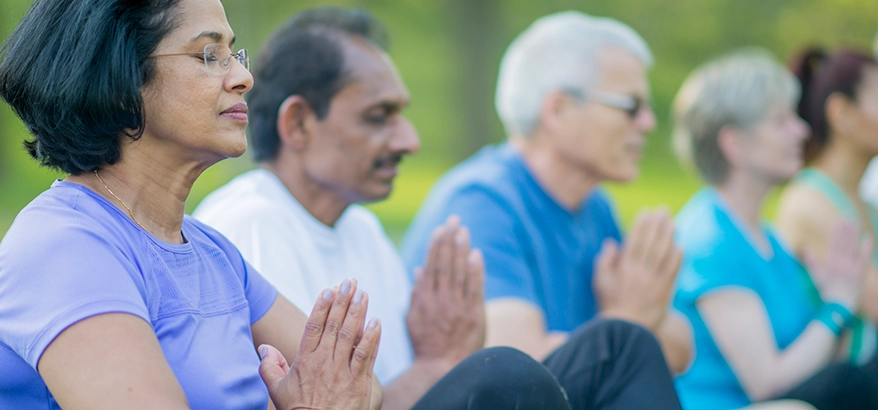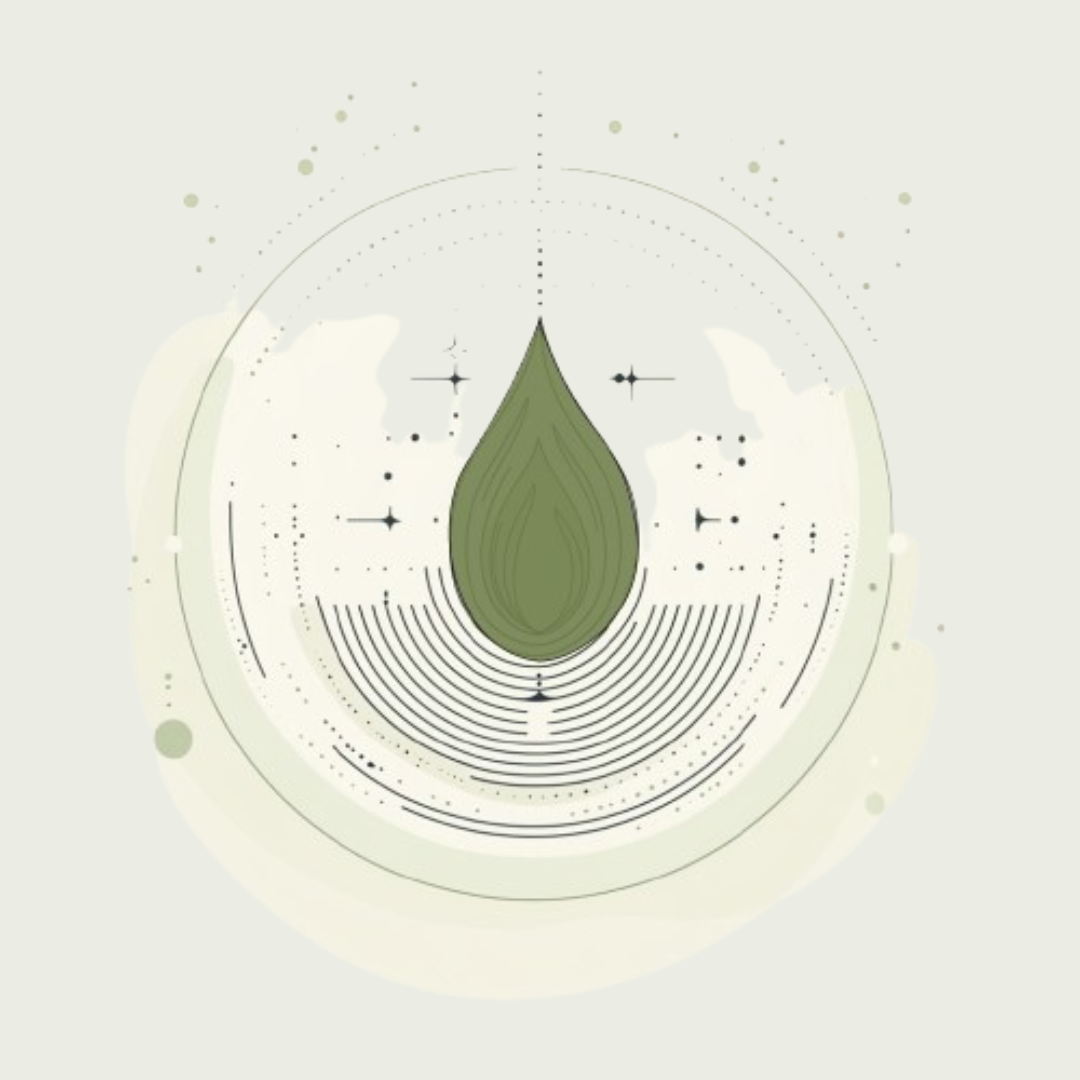Yoga has existed since time immemorial, with people becoming increasingly aware of and benefiting from this age-old practice. However, over the centuries, Yoga has evolved into dozens of forms and is embraced by millions worldwide. In this detailed guide to Yoga, we'll discuss the benefits, types, and various yoga postures.
The philosophy of Yoga is premised on bringing mind and body together through breathing techniques.
Benefits of Yoga for Physical, Mental & Emotional Health
Although Yoga is thousands of years old, it has found more relevance in the 21st century.
The benefits of Yoga extend to physical, mental, and emotional well-being, making it a perfect antidote for a sedentary lifestyle and stress-driven work environments.
Yoga regulates blood pressure, maintains a healthy weight, and relieves stress. Some people even rely on Yoga to heighten their spiritual faculties and tap into their deep, emotional channels.
Types of Yoga
Depending on your health goals and physical ability, you can choose your preferred yoga type from the following yoga asanas:
Hatha Yoga
It is a broad term that encompasses various styles of Yoga. It is characterized by slow body movements and holding poses while focusing on mindfulness. Physically, the goal is to challenge one's flexibility and strength while synchronizing body movements with breath.
Vinyasa Yoga
Vinyasa Yoga involves performing a series of postures one after another without breaking the movement. The individual must transition seamlessly from one pose to another while controlling their breath.
Ashtanga Yoga
This form of Yoga requires athletic abilities and engages various body muscles as you work through a fixed order of postures. Ashtanga is a type of Hatha Yoga, and its movements are like that of Vinyasa Yoga with a higher difficulty level. It is not uncommon to have sore muscles after performing Ashtanga yoga. So, keep a soothing massage oil handy, like Mahanarayana thailam, for post-yoga soreness.
Bikram Yoga
It is a form of hot Yoga – but hotter. Bikram Yoga is performed in a room wherein the temperature is maintained above 40 degrees with 40% humidity. However, performing strengthening poses in such an environment for 60-90 minutes is challenging. You can do this yoga for belly fat reduction and to maintain a healthy weight.
Restorative Yoga
As the name implies, this form of Yoga helps you wind down and release muscle stiffness through passive stretching. The goal is to calm your mind by engaging in gentle breathwork.
Yin Yoga
It's a slow-paced yoga style wherein you hold your pose for an extended duration– until you reach your pain threshold–and then let go, followed by a long exhale.
Basic Yoga Poses
If you are getting started, here are a few basic Yoga poses or mudras in Yoga that you can do at home or, better yet, under the supervision of an instructor.
Standing Asanas or Poses
Seated Poses
Forward Bends
Backward Bends
Twists
Inversions
Restorative Poses
These poses will ease you into the habit of doing Yoga daily, laying a foundation for advanced Yoga courses.
Pranayama Techniques (Breathing Exercises)
- Definition of pranayama
Pranayama refers to breathing exercises based on specific patterns. It is the ancient science of achieving physical and mental balance through regulated breathwork.
Different types of pranayama
Depending on breathwork patterns, pranayama is classified into various types:
Ujjayi Pranayama
Also known as ocean or victory breath, Ujjayi Pranayama is performed by inhaling and exhaling through a constricted throat. You will hear a sound similar to winds blowing through the trees or ocean waves crashing on the shore. This pranayama is an integral part of the more elaborate practice known as Sudarshan kriya yoga.
Kapalabhati Pranayama
This breathing exercise engages your abdominal muscles as you exhale and pull your navel in. The inhalation happens involuntarily as you relax your abdominal muscles. It helps clear the lungs & nasal passage and improves metabolism.
Anulom Vilom Pranayama
This breathwork involves inhaling and exhaling from each nostril alternately. When you breathe from one nostril, close the other using your thumb or index finger.
Benefits of Pranayama
According to a study conducted in 2013, pranayama helps reduce stress by calming the nervous system.
People who find difficulty sleeping at night can benefit from pranayama.
Pranayama helps you experience the blissful state of mindfulness, which means living in the present without the future or past concerns.
Performing pranayama may also help regulate blood pressure and reduce the risk of cardiovascular disease.
Pranayama may help increase lung capacity, which means people having asthma, tuberculosis, or allergic bronchitis may find some relief. However, it is recommended to consult your doctor before engaging in pranayama.
Pranayama is believed to improve cognitive function and enhance memory power by reducing stress levels and increasing oxygen intake.
Meditation and Mindfulness
- Definition of meditation
Meditation is a mental training practice that allows practitioners to connect with their natural cognitive processes by focusing on something external or internal or through observation and awareness. Meditation is done with eyes closed in a quiet environment to avoid distractions.
Different types of meditation
Concentration
One way to meditate is to focus on something as immediate as your breath or any other object in your surroundings.
Mindful Meditation
Mindfulness is a mental state wherein you are hyper-aware of what you are doing and where you are without letting your focus stuck on a particular thing.
Transcendental Meditation
This type of meditation involves chanting a phrase or word as a mantra with your eyes closed. Chanting mantras helps calm your mind and filter out intrusive thoughts so you can be at complete peace. Chanting mantras and entering a deep meditation is an age-old practice to awaken kundalini – the divine energy at the base of the spine.
Guided Meditation
This type of meditation involves using your senses to visualize pictures or situations suggested by your guide or instructor. Such positive visualizations have a calming effect that stays with you long after your meditation session. The guided meditation culminates with yoga nidra, which helps you relax and internalize the immediate effects of meditation.
Benefits of meditation
Stress & anxiety management
Stress & anxiety management is a necessary survival skill in today's fast-paced world. Most people use meditation to manage stress and intrusive thoughts that make them anxious.
Also read: Stress Management in Ayurveda: Natural Coping Strategies for Stress
Improves emotional strength
Some people are better than others at coping with emotional trauma. If you wonder how to be like them, meditation may be the answer. Meditation can help you build emotional strength so the words and actions of others do not easily trigger you.
Self-awareness
When you feel indecisive or lack control over your life, meditation can help you reconnect with yourself and know who you indeed are.
Increases Attention Span
Overusing social media and other digital channels has our attention span shrinking daily. Meditation can help you break the 'mental scroll' and learn to focus your attention where needed.
Sleep Better
Sleep disorders can occur because of mental or physiological issues. Meditation is an excellent tool to help you wind down and experience restful sleep every night.
Also read: Ayurveda for Sleep: Remedies and Medicines for Restful Sleep
Mindfulness Practices
Mindfulness is a mental practice of focusing on being fully aware of what you're experiencing without getting into the layers of judgment and interpretation.
Yoga for Specific Needs
Yoga is a universal practice but can be modified for a definite purpose. Here are some ways you can use Yoga to target a specific concern or objective.
Yoga for stress and anxiety relief
There's substantial evidence to support the effectiveness of Yoga against stress and anxiety. A 30-minute morning yoga session can get you off to a great start. Doing Yoga in the evening can wash off your stress and fatigue after a tiring day at work.
Yoga for back pain
Yoga poses, like Cat-Cow, Extended Triangle, Sphinx, Cobra, and locust, can help you manage back pain and strengthen your muscles to handle the physical ordeal of everyday activities.
Yoga for Pregnancy
When performed under the supervision of a certified instructor, Yoga can help make the otherwise difficult phase of pregnancy easy and avoid complications during childbirth.
Yoga for seniors

Life after 60 becomes precarious and challenging. Yoga is an excellent way to stay fit and healthy and enjoy the golden years you have earned after decades of hard work.
Starting Your Yoga Practice
With some guidance and commitment, you can start practicing Yoga and eventually make it an intrinsic part of your lifestyle. Here's what you need to get started.
Finding a yoga class or teacher
It is critical to find a certified yoga teacher who is committed to the practice and your goals. Yoga is a technique that must be done right, and you need someone who can supervise your every pose and movement to ensure you are on the right track.
Choosing the right yoga mat and props
A comfortable yoga mat and props like wedges, straps, blocks, bolsters, etc., can elevate your experience and reduce fatigue or unnecessary discomfort. It's a one-off investment and should never be skimped on.
Creating a yoga space at home
If you don't have a yoga studio nearby, you can create one at home. Choose a well-lit area with adequate ventilation. Plus, having potted plants in your yoga space can be a great mood booster.
Setting realistic goals for your practice
Like any health and fitness regime, managing your expectations and setting realistic goals with your yoga practice is essential. With consistency and correct guidance, you should see results in a few weeks, if not days.
Tips for Practicing Yoga
Yoga is more than just a fitness routine; it's a lifestyle that fosters a sense of calm and expects participants to be respectful of their teachers and peers. Here are some tips to start your yoga practice and stay the course.
Importance of consistency
Consistency is key to realizing the amazing benefits of Yoga. So, it is important to show up every day and devote at least 30 minutes of your time to the practice. When you are consistent with Yoga, you are likely to develop a habit of staying consistent in other areas of your life as well.
Listen to your body
Some yoga poses are difficult to hold. Make sure you are not pushing your body beyond its physical boundaries. If you feel intense pain or discomfort, quickly retreat to a relaxed position, lest you might pull a muscle. Seek your instructor's help ifyou cannot hold a pose. They will help you break it down into baby steps and prime your body for challenging poses through basic stretching exercises.
Setting an intention
What do you want to attain with your yoga practice? Setting an intention will help you progress in the right direction and help you achieve your goal faster. Setting an intention for the practice also lets you stay focused and keep distractions at bay. Doing meditation for 15 minutes before your yoga session can help you get into the groove and reap maximum benefits from your practice.
Incorporating Yoga into the daily routine
Following a daily yoga routine can elevate your physical, mental, and emotional faculties while helping you achieve the blissful state of mindfulness.
Take baby steps. It's easy to spare 10 minutes a day without feeling the pressure of commitment. As you get comfortable and become punctual, increase your time gradually until you are able to devote at least 30 minutes every day. The results will be worth the effort.
Key Takeaways
Yoga is a time-honored practice that has been helping people across the world achieve physical, mental, and emotional balance. People also use Yoga as a medium to connect with their spiritual-self and experience mindfulness.
There are different yoga poses – each type is geared toward a physical or mental benefit and is prescribed based on the individual's physical abilities.
It is recommended to start with basic poses of Yoga and then gradually work your way up to advanced levels.
Pranayama is a subset of Yoga that helps you calm your mind and activate your body's chakras to achieve physiological equilibrium.
Another aspect of Yoga is meditation and mindfulness. Meditation can be performed separately or as a complementary practice to Yoga. If you find it challenging to meditate independently, you can opt for guided sessions that will help you realize the maximum benefits of this ancient well-being practice.
Conclusion
Most people perform Yoga daily to maintain their overall mental and physical health. However, there are advanced yoga practices that target a specific health issue or objective. For instance, you can find specialized courses for sleep yoga, yoga for back pain, prenatal yoga, yoga for seniors and stress relief, yoga for pcos, yoga for weight gain and more.
When you decide to embark on the delightful journey of Yoga, the first step is to find a certified instructor who specializes in Yoga for beginners and can guide you every step of the way as you make progress. You can also buy yoga props to make each session more rewarding and comfortable.
If you can't find a practitioner in your vicinity, consider setting up a yoga space at home. All you need is a quiet corner with proper ventilation and lighting. Make sure you don't have any pets around while performing Yoga – they tend to pick up your energy and want to play with you.
If you have already started practicing Yoga, staying consistent is key. Set your intention for each session and stick to the schedule. Yoga is a simple practice that can be performed without any special equipment; therefore, it can quickly become an integral part of your life. Keep in mind that your body has certain physical limits. Always respect those limits when holding difficult yoga poses.
If you haven't started practicing Yoga yet, think of everything you will gain by sparing 30 minutes out of your busy schedule. Pick a place where you feel most comfortable and connected with yourself. As you roll out your yoga mat and set up the props, close your eyes and visualize each pose you will hold in the next half an hour. By setting an intention for your session, you will be well on your way to reaping the amazing benefits of this age-old practice.
We hope you found this complete yoga guide helpful!




